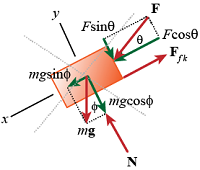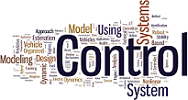 |
 |
Teaching
Vibration and Shock I
MAE 467/567
An entry-level vibrations course to introduce senior mechanical & aerospace engineering students to the modeling and analysis techniques used to identify, analyze, and prevent undesirable oscillations in mechanical systems, as well as aeronautical and civil structures. Major topics covered include (1) modeling of discrete mechanical systems; (2) free, harmonic and transient responses of one degree-of-freedom systems; (3) time-frequency domain equivalence; (4) multiple degree-of-freedom systems; (5) natural freequencies & vibration mode shapes; and (6) an introduction to the vibration of continuous systems.
| As part of the curriculum, a final project with an experimental component is assigned. Some of the video submissions for the Fall 2016 project are shown below. The submissions can be aslo viewed on the SVL's official YouTube channel. |
Acoustics and Wave Propagation*
MAE 565
This course introduces fundamental concepts of engineering acoustics and reviews acoustic wave equations, the dynamics of acoustic resonators, and wave propagation phenomena including radiation, absorption, and transmission of sound from and through simple structures. Acoustic measurement techniques, prediction methods, and design tools for noise control and acoustical system design in practice will be presented. The course also reviews wave dispersion and elastic wave propagation in 1D structures, with applications to phononic systems and acoustic metamaterials.

*This course was newly developed by Dr. Nouh and taught for the first time at UB in Fall 2018
Dynamics
EAS 208
An introductory sophomore-level engineering course to introduce students to the basic principles of the dynamics of particles and rigid bodies. At the conclusion of the course, students should be able to: (1) understand the basic physical concepts of dynamics, (2) understand and be able to relate the kinematics of particles and rigid bodies to the solution of dynamics problems in straight line and curvilinear motion, (3) understand and be able to apply Newton's Laws to particles and rigid bodies to solve problems related to a dynamic behavior, and (4) be able to apply the methods of work, momentum and energy to particles and rigid bodies associated with translational and rotational motions.

Systems Analysis
MAE 571
This graduate level mechanical & aerospace engineering course introduces the students the principle concepts of linear system dynamics. By the conclusion of the course, students should able to (1) work comfortably with matrices and vectors, vector spaces, and coordinate transformations, (2) develop comprehensive mathematical techniques for the analysis of systems in the time domain, (3) understand the fundamental state-space concepts, state-space representations of control systems as well as time domain solutions of state-space equations, (4) understand the concepts of controllability and observability and their repercussions with regards to control system design and analysis, and (5) understand different feedback control structures and mechanisms. This course is primarily mathematical, but different mechanical and aerospace engineering examples are given along the way to bridge the gap between theory and practice.
